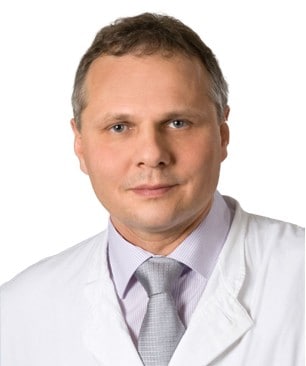History of depression

Melancholy, now called depression, has accompanied humans since the beginning of history. Its symptoms found their resonance in art, literature, philosophy, which tried to interpret, explain and to cope with the mental despair.
In the following chapters we shade light on how the understanding of the condition evolved over the past millenia.
Ancient Egypt
The ancient Egyptian document, known as the Ebers papyrus, from circa 1550 BC, contains the first description of depression. Some notes in this papyrus describe a status of disordered concentration and emotional distress of the mind. Such symptoms are typical for depression.
Ancient Greece
The foundation for the modern medicine has been created in ancient Greece. In the 4th and 5th centuries B.C.E., the Greek philosopher and the father of modern medicine, Hippocrates separated medicine from religion crating, what we call today an “evidence based” science.
The term “melancholia”, the older description of today’s depression, derives from the Ancient Greek words “melas” (black) and “kholé” (bile). Hippocrates argued that mental illnesses have biological origins. His viewpoint contradicted the popular custom of attributing mental health disorders to supernatural or magical sources. He described “melancholia” as a manifestation of a brain dysfunction.
Humoral hypothesis
According to the humoral hypothesis, humans needed a balance of four “humors” (blood, black bile, and yellow bile) and three elements such as fire, water, and earth. Melancholy was understood as an excess of black bile, while mania was believed to be caused by overproduction of yellow bile.
In ancient and later in medieval times, the treatment aimed to restore the balance of humours, using dietary measures, baths, and activities such as movement, music, and stimulating conversations. The ancient physicians also used bloodletting, purgatives, cautery, or medication. These methods were still in used until the end of the early XIX century.
In that time melancholy was considered not only as a disease, but also as a specific human constitution. Its occurrence was related to the logic of the parallelism between microcosm (individual) and macrocosm (nature) with the afternoon, autumn, or higher age to which a melancholic character was assigned.
Plato, the “psychological” hypothesis
The Greek philosopher Plato (427-347 BC) believed that the cause of madness was in the mind. He saw mental illness as the result of a person’s ignorance about his psyche leading to self-deception. Even today the division of psyche and body reflects such past concept, marking the barrier between psychiatry and psychology.
Plato was convinced, of the connection between melancholy and genius: “Why do all exceptional men in philosophy or politics or poetry or the arts prove to be melancholic?” (Phaedrus, c. 360 BC).
Middle Ages
In the Middle Ages retained the humoral pathology approach of the ancient world. However, the humoral theory representing four temperaments, as well as the corresponding diseases, were given a religious meaning. In the philosophy of the Middle Ages earthly life was necessarily connected with illness and suffering, while the true healing could only lie in the resurrection, in the afterlife.
The beginning of modern era
In the modern age, the ancient-medieval views continued, but with the secular orientation towards nature and the individual. This mindset emphasized the glorification of youth, beauty, and health, and the suppression of death. Such perception is exemplified in the painting “The Fountain of Youth” (1546) by Lucas Cranach (1515-1586).
In the modern era, melancholy was increasingly interpreted empirically. The Oxford theologian Robert Burton (1577-1640) derived this mental state from biological, psychological, and socio-cultural conditions. In his “Anatomy of Melancholy” (1621) he wrote:
“Those who have an unfavourable position of the Moon, Saturn, or Mercury in their horoscope; those who live in overly cold or hot climates; those who come from melancholic parents or who have suffered from illness for a long time; people who live a naturally solitary life, wholly given over to contemplative and withdrawn from active life – they are all most susceptible to melancholy. Both genders are affected by it, but when women fall ill, they are far worse and more violently tormented.”
Reflecting on such statement we must admit, that apart of the astrological admixture, the description of factors causing depression corresponds to the modern view about depression.
Enlightenment
During the Age of Enlightenment, new experiences, theoretical interpretations, and social initiatives emerged. They led physicians to attribute melancholy to the nervous system. The materialistic perspective made them believe that melancholy could be treated with mechanical methods. They used in the treatment of mental illnesses showers, rotational machines, cold and warm stimuli, and chemical means like arsenic, mercury, bloodletting, and enemas. Enlightenment was also the age where the first psychological techniques such as manipulating emotions were introduced.
Enlightenment was also the era with humanistic attempts in medicine and psychiatry. In the field of psychiatry, the patients were liberated from chains through institutional reforms. In France, psychiatrists Philippe Pinel and Jean Etienne Dominique Esquirol, and in Germany, physician Johann Christian Reil were associated with these reforms.
Metaphysics of suffering
Georg Wilhelm Friedrich Hegel (1770-1831), who dealt with the disturbances and illnesses of the soul in his philosophical system, emphasized the anthropological dimension of melancholy and saw it as a fundamental developmental stage of humans.
The Danish philosopher Søren Kierkegaard (1813-1855) gives melancholy an existential meaning, which shaped psychopathology into the 20th century. He wrote:
“As immediate spirit, human beings are connected to all earthly life, and now the spirit wants to collect itself out of this dispersion and explain itself within itself; personality wants to become aware of itself in its eternal validity. If this does not happen, if the movement is interrupted or pushed back, then melancholy sets in.”
Depression. The evolution of diagnosis
Despite the symptoms of depression are known to humans since millenia, the scientific research on depression started first at the end of the 19th century.
Emil Kraepelin’s, classification
Emil Kraepelin, (15.02.1856 – 07.10.1926) was a German psychiatrist, and founder of modern scientific psychiatry. He was the first who systemized the mood disorders creating for these conditions a term called “manic depression”. This term today would cover a range of mood disorders, such as depression and bipolar disorder.
Sigmund Freud, mourning and melancholia
Sigmund Freud, (06.05.1856 – 23.09.1939) was Austrian neurologist and the founder of the psychodynamic approach in psychology. he developed the first effective psychotherapeutic method for treatment of mental illnesses.
In his essay, “Mourning and Melancholia” (1917) he linked the state of melancholia to mourning. Both conditions are often triggered by the same circumstances. Freud discusses what conditions need to be present for the two states to progress along their varying paths. He theorized that the depressed individual has identified with the object of affection through an unconscious, narcissistic process. He wrote: “Mourning is regularly the reaction to the loss of a loved person or to the loss of some abstraction which had taken the place of one, such as one`s country, liberty, an ideal, and so on.”
Mourning
Mourning is not considered a psychiatric disorder. Morning is a normal reaction accompanied by depressive symptoms to traumatizing events. Over time reality wins out and slowly the person returns to normal state of emotions.
Melancholia
In melancholia the depressive symptoms persist over longer period. Quoting Freud: “In mourning it is the world which has become poor and empty; in melancholia it is the ego (patients’ personality) itself.”
Freud assumed that the melancholic individuals may know that they have lost something. However, the person is not aware of the underlying psychological mechanism. In melancholia essence of the loss is inaccessible to consciousness. So, in mourning the libido (life energy) slowly withdraws from the lost object and replaces it with other one. In contrary in melancholia, the libido withdraws into the Ego and identifies with the lost object.
Karl Abraham, libidinal hatred
Karl Abraham, (03.05.1877 – 25.12.1925) was a German psychoanalyst, and a collaborator of Freud. He also analysed the relationship between mourning and melancholia. For him, the structure of melancholia was closer to that of obsessive neurosis rooted in the intense hostility toward the outside world. In both illnesses, hostility reduces the ability to love.
Abraham assumed that in melancholia, the hostile drives are projected and suppressed. Based on the Freudian theory he proposed a psychopathological model of depression. Abraham’s idea was, that libidinal hatred projected onto the outside world, reverts back onto the subject. The subject (patient) suppressing the aggressive impulses, develops depressive symptoms. The process of suppression consumes the “libidinal energy” and in consequence the patient develops depressive symptoms.
Depression, contemporary diagnostic
Today’s psychiatric diagnostic is based on the so called phenomenological (descriptive) psychopathology. It examines and describes the basic structures of subjective experience and their modifications in mental illnesses using empirical methodology.
The ICD-10 (International Statistical Classification of Diseases) is a medical coding system developed by the WHO (World Health Organization) which includes criteria for mental and behavioral disorders. ICD 10 is similar to the American statistic manual DSM (Diagnostic and Statistical Manual of Mental Disorders).
Today depression is categorized based on symptoms severity in mild, moderate, and severe episodes. The additional criteria are the presence of additional psychotic symptoms. Such condition is called depression with psychotic features. The second important criteria is the symptoms distribution in time: single episodes or in case of long-lasting symptoms: recurring depression.

DR. GREGOR KOWAL
Senior Consultant in Psychiatry,
Psychotherapy And Family Medicine
(German Board)
Call +971 4 457 4240
